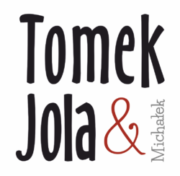In the heart of ancient Egypt, the principle of Ma’at was not merely a philosophical ideal—it was the living fabric of society, binding the divine to the daily, the cosmic to the human. Ma’at embodied cosmic order, truth, balance, and moral integrity, guiding everything from royal decrees to household behavior. This sacred concept ensured that truth prevailed, harmony reigned, and justice flowed like the Nile—smooth, steady, and enduring.
The Foundation of Ma’at: Cosmic Order and Ethical Living
Ma’at represented the eternal balance maintained by the gods, especially the goddess Ma’at herself, often depicted with an ostrich feather symbolizing truth and justice. This principle was mirrored in Egyptian law, where fairness was not arbitrary but rooted in divine order. The pharaoh, as earthly embodiment of Ma’at, upheld law and ethics, while ordinary citizens internalized these values through ritual and daily conduct.
“Let your speech be true, your actions balanced, your heart in alignment with Ma’at.”
Such wisdom shaped governance, trade, and interpersonal relations, ensuring society thrived in harmony.
Ma’at in Material Culture: Symbols of Stability and Precision
The Egyptians materialized Ma’at through enduring symbols. Gold, a divine metal believed to embody the eternal sky and sun, reflected the unchanging nature of truth. Carbon black ink—crafted from soot and gum—was used to record legal documents and sacred texts, preserving truth with lasting clarity. Discipline was also marked through ritual: head shaving, practiced for hygiene and spiritual purity, demonstrated respect for order and self-mastery in a sun-scorched land.
- Fire-setting gold extraction at 600°C transformed raw ore through controlled heat—precision mirroring Ma’at’s demand for deliberate balance.
- Carbon black ink production transformed organic matter into a lasting, legible symbol, embodying permanence and clarity.
- Head shaving was both practical innovation and cultural discipline, maintaining dignity in harsh climates while reinforcing communal order.
Craftsmanship and Knowledge: Tools of a Balanced Society
Ma’at’s legacy extended into skilled craftsmanship and intellectual pursuit. Gold extraction via fire-setting showcased technical mastery tempered by controlled precision—much like maintaining inner balance. Ink production transformed natural materials into permanent records, ensuring justice and history endured beyond fleeting moments. Even personal grooming, such as head shaving, reflected a society where hygiene and dignity were not luxuries but expressions of Ma’at’s disciplined order.
| Craftsmanship | Fire-setting gold extraction at 600°C | Precision and transformation through controlled heat |
|---|---|---|
| Carbon black ink production | Transforming organic matter into lasting symbols | Maintaining hygiene and clarity in communication |
| Head shaving | Practical hygiene and discipline | Preserving dignity in a demanding environment |
Eye Of Horus: A Modern Emblem of Ma’at’s Legacy
The Eye of Horus stands as a powerful bridge between ancient wisdom and contemporary understanding of justice. Originally an ancient amulet symbolizing protection, healing, and restoration, it embodies Ma’at’s core values—protection of truth, healing of imbalance, and renewal after loss. Today, it resonates in modern justice systems and cultural identity, reminding us that fairness and renewal are timeless.
Like the balanced eye of Horus, Ma’at taught that justice requires precision, healing, and restoration—principles still vital in law, ethics, and social harmony. Its enduring presence in art, jewelry, and digital spaces—such as the Eye of Horus slot machine at Eye of Horus slot machine—shows how ancient symbols adapt while preserving their meaning.
Ma’at Beyond Symbol: An Enduring Ethical Framework
Ma’at was not a relic but a living framework for ethical life. Its principles—balance, truth, and harmony—continue to inform modern concepts of fairness, equality, and the rule of law. Daily practices like ritual, craftsmanship, and governance were not separate but interconnected expressions of Ma’at, ensuring society thrived through consistent, purposeful action.
“Balance is not passive; it is active, disciplined, and deeply intentional.” This truth, rooted in Ma’at, remains a guiding light—from the pharaohs’ courts to today’s institutions. The Eye of Horus, whether gazing from ancient temples or digital screens, reminds us that justice is not just a system—it is a way of life.
